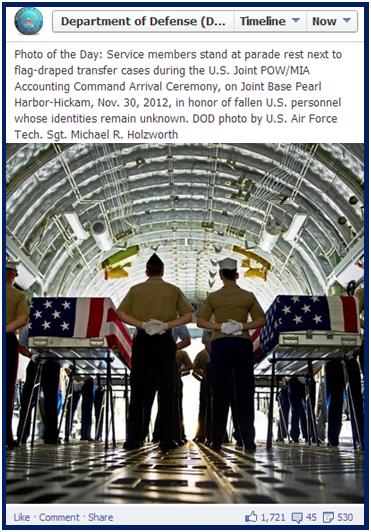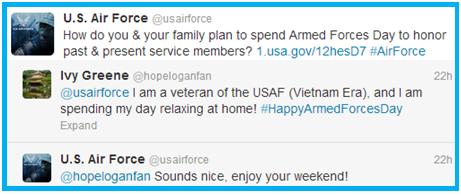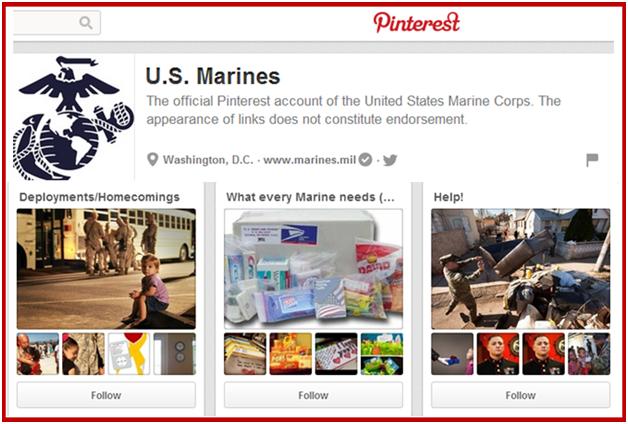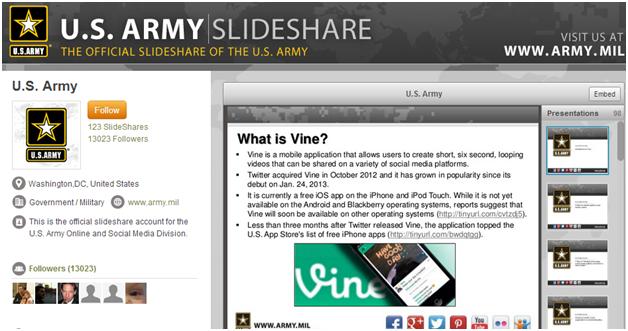 We knew we had a winner in Lori Lewis when she told us how she’d spent a weekend evening reading the Department of Defense’s social media guidelines a couple years back. Since that time, Lori has become a go-to person for social media in radio. And the U.S. military continues to set a great example of how to become a social brand. During the holiday weekend, please take time to honor those who serve our country, and also spend a few minutes looking over Lori’s great analysis of how the military’s social media policies can make radio brands better. We’ll return Tuesday with a new JacoBLOG. – FJ
We knew we had a winner in Lori Lewis when she told us how she’d spent a weekend evening reading the Department of Defense’s social media guidelines a couple years back. Since that time, Lori has become a go-to person for social media in radio. And the U.S. military continues to set a great example of how to become a social brand. During the holiday weekend, please take time to honor those who serve our country, and also spend a few minutes looking over Lori’s great analysis of how the military’s social media policies can make radio brands better. We’ll return Tuesday with a new JacoBLOG. – FJ
With Memorial Day upon us, it’s a day set aside to honor those who have served and continue to serve our nation.
In 1942, as millions volunteered or were drafted for military duty, communication guidelines were given to soldiers and their families about the dangers of how unintended information could be leaked to the enemy during World War II.
Most of these soldiers and family members never really thought about how vulnerable casual conversation could make them.
So to solve that, the government established a code of conduct: “Think before you speak.”
And over 70 years later, that message is even more important with today’s technology.
There are challenges that come along with this open and connected world, such as social sharing and location-based settings. The military’s shift towards strategically employing digital and social platforms to enable the Armed Forces to “compete in an evolving global messaging space” is something all companies that default to random acts of social should take note of.
Jack Holt, who served as the Department of Defense Senior Strategist of Emerging Media, summarizes two different approaches to deploying social media:
“Will we treat social media as a fortress to be defended or as a field of maneuver?”
Clearly, they chose the latter.
The U.S. military looks at it this way: if they can train soldiers to operate technical equipment and navigate the battlefield, they can also effectively train soldiers in the proper use and appropriate behavior in the social space.
But it was a matter of identifying what these social channels could help them achieve and then creating “drills” around it.
Below are a few highlights from the U.S. Armed Forces’ Digital and Social Strategy:
- Establish a Direction – The Armed Forces have a clear mission in visual storytelling and informing with their social communication.
Now take a peek at your brand’s social assets. Is your mission crystal clear?
- Be Active – The social space doesn’t take a break just because it’s the weekend. As the Armed Forces remind us, “A static social media presence is ineffective.”
Notice how the U.S. Air Force didn’t ask a question and then “walked away?” It’s important to take the time to respond.
Never underestimate the power of acknowledgement.
- Build A Community – “A large following doesn’t happen overnight so relax and execute the social media strategy.”
We’ve seen this slow build just with the “Special Forces” (Brand Advocate) programs we’ve worked on here at Jacobs Media. Active social communities aren’t built in just a couple weeks.
Be patient and stick to the mission.
- You Can’t Force Trust – The military knows the importance of having consistency in the messaging – speaking in a singular voice. This is how people learn to trust the information they get from you.
- Pay Attention To Emerging Platforms – The U.S. Army is actively talking about Vine right now on their Slideshare site. This is a great practice for all brands – take the time to discuss new social sites and apps. In Jacobs Media’s Techsurvey9, stakeholder stations are learning about how social sites (other than Facebook) are becoming more meaningful to fans.
The security of our servicemen and women has always been of utmost importance and as you see, the U.S. Army Social Media policy speaks to the core of higher level thinking in regard to today’s cultural trends.
The more you can serve relationships on consumers’ preferred platforms and elevate their experiences, the more you keep your brand in the hands (and the hearts) of the fans.
As a strategist for some of radio’s great brands, I concur with how the military cuts to the core of brands that might be having issues with implementing a cohesive digital and social vision.
“If you’re having trouble getting everyone on the same page, you either have a training problem or a hiring problem (or maybe even both) – but technology is certainly not the problem.”
Enjoy your weekend and remember to honor those who serve our country.











Leave a Reply